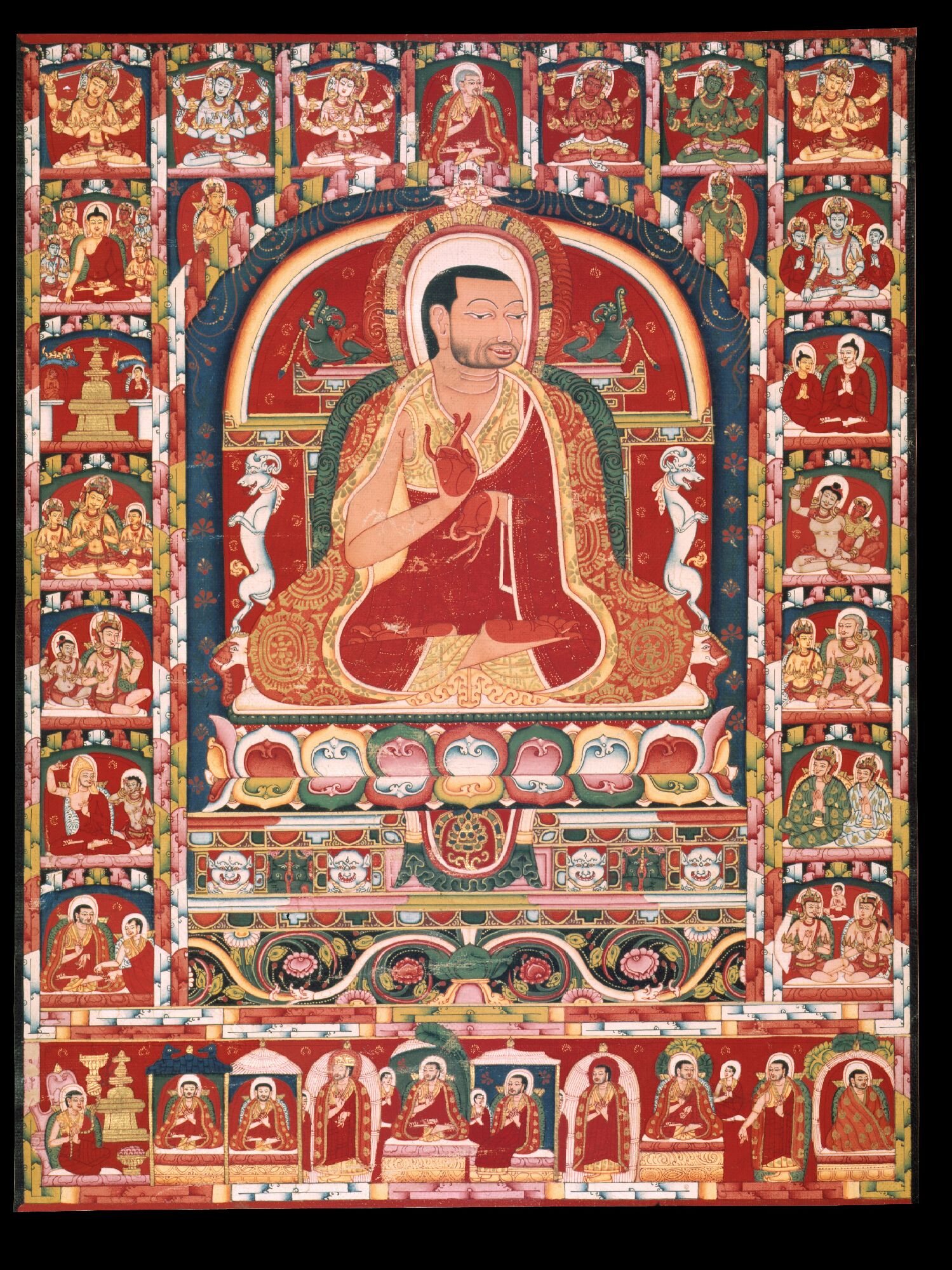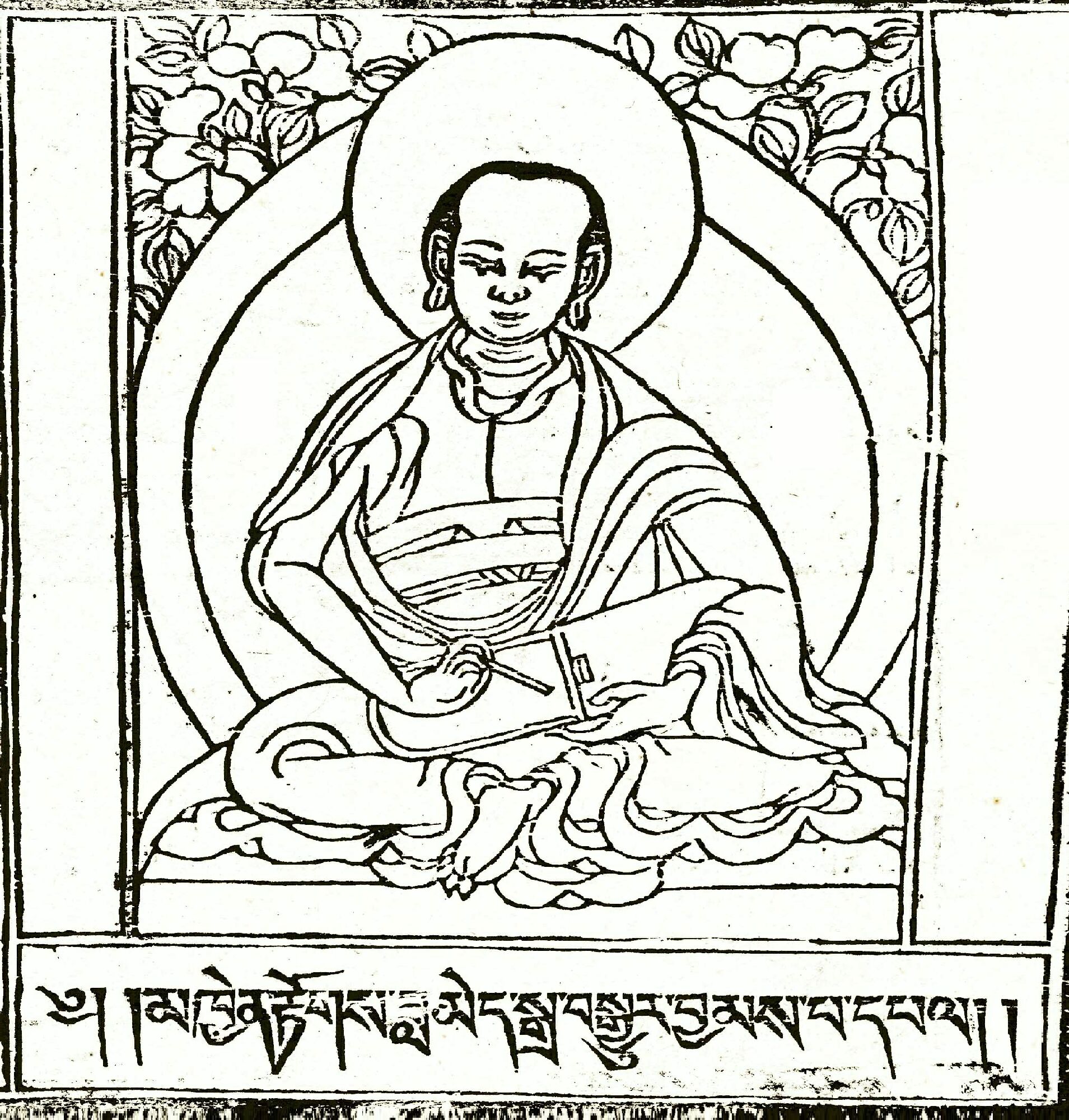Biography and autobiography in Tibet are important sources for both education and inspiration. Tibetans have kept such meticulous records of their teachers that thousands of names are known and discussed in a wide range of biographical material. All these names, all these lives—it can be a little overwhelming. The authors involved in the Treasury of Lives are currently mining the primary sources to provide English-language biographies of every known religious teacher from Tibet and the Himalaya, all of which are organized for easy searching and browsing. Every Tuesday on the Tricycle blog, we will highlight and reflect on important, interesting, eccentric, surprising and beautiful stories found within this rich literary tradition.
Part 1: Mila and Marpa
Part 2: Gampopa and Barompa
Part 3: First Karmapa and Lama Zhang
Part 4: Pakmodrupa and Gyergom Tsultrim Sengge
Part 5: Taklungtangpa and Sanggye On
Part 6: Marpa Sherab Yeshe and Jikten Gonpo
Kagyu Founders, Part 7: Rinchen Gon and Jampa Pel
The Tropu Kagyu is one of the eight minor traditions of the Kagyu Tradition. “Minor” simply designates that the tradition’s founders were one generation removed from Gampopa—in this case, they were students of Pakmodrupa Dorje Gyelpo. Unlike other minor traditions such as Drigung, Drukpa, and Taklung Kagyu, the Tropu Kagyu remained a small, localized tradition whose teaching lineages eventually blended with larger institutions located nearby.

Tropu Gyeltsa Rinchen Gon (1118–1195) established what became know as the Tropu Kagyu tradition. He was born in Tsang to the Nub clan, a prominent family descended from Nub Namkhai Nyingpo, one of the first Tibetans to be ordained in the 8th century. He began his studies early, at the age of 5, and at 19 moved to the Lhasa region to continue his training. Although he was expected to take a wife after a certain age, he managed to obtain his father’s permission to remain single.
He is said to have studied with a total of 82 teachers—mostly Kagyu, although he also received instructions in Nyingma, the Zhije tradition from two of Padampa Sanggye’s (d.1117) direct disciples, and the Chod tradition started by Machik Labdron (1055–1149). His foremost teacher was Pakmodrupa Dorje Gyelpo (1110–1170), under whom he studied and gained experienced in the Mahamudra teachings, and whose monastery he supported with his family’s considerable wealth. It is unclear whether or not Rinchen Gon was ordained as a novice monk during his early studies; he took his complete ordination only later in life at the age of 54. Afterwards, he built a small monastery for himself and 20 monks in the Tropu valley. It would be his nephew and disciple, the acclaimed translator Tropu Lotsawa Jampa Pel, who would eventually establish the Tropu Kagyu as a distinct lineage.
Tropu Lotsawa Jampa Pel (c. 1172–1236) was born in Tsang and was sent to study with his uncle at the age of 8. As a teenager he traveled around studying philosophy, and was particularly gifted in Sanskrit. He received his full ordination at the age of 19. His uncle, Gyeltsa Rinchen, predicted his nephew’s future on his deathbed: “Like a brass horn, your good fortune will widen at the end.” Soon after the funeral was completed, he traveled to Nepal where he studied the sutras and tantras with Buddhashri, an Indian master living in Bhaktapur, Kathmandu.

Jampa Pel spent the next several years traveling back and forth between India, Nepal, and Tibet, inviting Indian masters to teach. He first brought back a tantric practitioner named Mitrayogin who stayed and taught for a year and a half. After accompanying him back to Nepal, he invited Buddhashri, who taught in Tibet for two years. In 1204, he and a party of several students traveled to Assam to invite a 78-year-old master, Shakyashribhadra, to travel to the monastery in Tropu to teach. Shakyashribhadra was reluctant to make the journey at first, but agreed after Jampa Pel was able to ask each of the Pandits doctrinal questions in Sanskrit. Accompanied by several other Indian scholars, they traveled back to Tibet where Shakyashirbhadra remained and taught for ten years. During this time Jampa Pel acted as his translator, which earned him the title “Lotsawa.”
Among his many accomplishments, Lotsawa Jampa Pel planned and carried out the building of an enourmous eighty-cubit statue of Maitreya made of gilded copper from the offerings the Indian scholars had amassed. According to legend, when Shakyashribhadra performed the consecration, he remarked, “I myself am entirely incapable of performing the royal honors of consecration. Oh Buddha Maitreya, in the Tushita Pure Land, you see and know this, so I ask you to do it.” It is said that melodies and perfumed scents arose out of nowhere, flowers fell from the sky, and a ball of light descended and dissolved into the statue. This statue inspired many other giant Maitreya statues in temples across the Tibetan plateau, including the one in Tashilhunpo Monastery built by the Gendun Drub, the First Dalai Lama.
After his death in 1236, Jampa Pel was succeeded by many accomplished students, including a female teacher named Machik Rema. Foremost among the followers of the Tropu lineages was Buton Rinchen Drub (1290–1364), a Kalachakra master who eventually founded his own monastery at Zhalu. By his time, however, Tropu Monastery had come under heavy influence from the nearby Sakya institution, and eventually merged with other larger schools.
Contiue to Part 8: Lingrepa and Tsangpa Gyare
Thank you for subscribing to Tricycle! As a nonprofit, we depend on readers like you to keep Buddhist teachings and practices widely available.